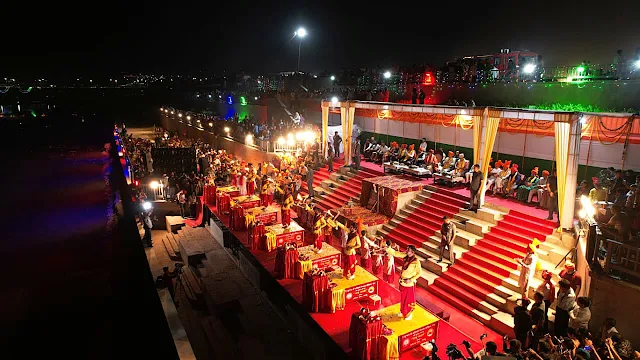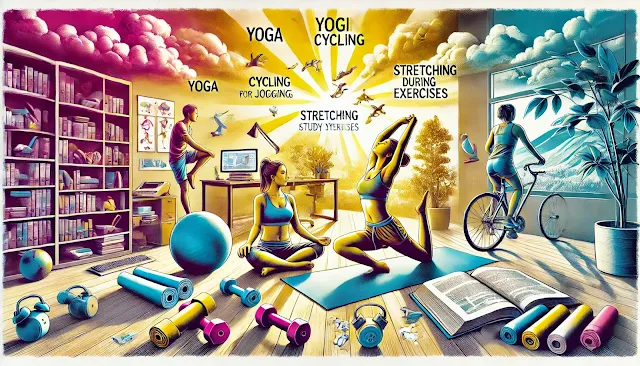Guru Ravidas and His
Spiritual Journey
Life of Guru Ravidas (1414–1540 A.D.)
 |
| Dr. Raj Kumar |
The earliest collection of Guru Ravidas’s poems
are available in
Adi Granth, which includes hymns of the various Saints
in that book. Primal
(Adi) book or scripture
(Granth), also
called the
Granth-Sahib, the name given to the scripture that
brings together the poetry of the first five Gurus and the ninth Guru in the
line of Guru Nanak was Guru Govind Singh ji. The
Adi Granth was compiled
by Guru Arjun Dev ji and it was completed during the time of Akbar Badshah.
Literally, Sound, Voice, Word, hymn; esoterically i.e. the underlying
Sound-Current of Divine energy with Surat Shabd Yoga, that created and sustains
the universe, also called Word, Name, Holy Spirit, Holy Word, unstruck music,
the music of the spheres, and so forth. It was through Shabd (Ravidas), the
eternal power of God, that souls were sent down from their original home, that
is, the area of Jammu and Kashmir state. In the habit of CreativePower
(Ravidas) is absent inthe light of
"HumanHistory" which drafted
by the scholar on the basis of spiritual knowledge as it was the study of Guru
Granth or Holy Bible. In the Bible the
“Word" refers to the dynamic
power of God that creates, enlivens and sustain the universe. In different
religions tradition and culturesHis power of devotionis known under a multitude
of names, related with
Bhakti term. There are several terms related with
Bhakti Movement in India after 1947 that are either synonymous with or explain
certain aspects of
Bhakti. The term
Bhakti conjures up different
meanings different feelings in the devotee of Dera Bias (Amritsar); for some it
is"
"Love of God", for others prayer or grace, it seems
based on
“Truthful-Study" Bhakti Movement in India, thus it has all
encompassing words referred above in the life of Guru Ravidas or Lord Christ.
To get a better understanding of the different aspects of Bhakti Movement, it
leads to us towards
Moksh or salvation, we discuss thembelow:
1. Bhakti and Upasana (Adoration)
Upasana, literally, "sitting
near", is an expression associated with God called Cloud-burst view of the"Natural-History"
or called external ritual worship as well as internal acts of devotion,
meditation, and self-surrender. The term Bhakti Movement for spiritual
knowledge, it was started by Dera Bias for the upliftment of Dalit-Culture
since 1891. There is no need of the exoteric study in future.
2. Bhakti and Prema (Love)
There are various type of "Love"
(Prema); that stem from attractions, physical, intellectual and divine. But
love that stems from physical or intellectual attraction is less in Indian
society after 1947, there is only politics. People love with the physical life,
not with the spiritual Knowledge called Surat Shabd Yoga.No doubt, Lord Christ
says, "Love is God", but there is a politics of Negativism in
India found after 1947, based on Jat-Pat.
3. Bhakti and Jnana (Knowledge)
The great sage Narada (dates unknown),discussed
the superiority of the devotee (Bhakti) to Knowledge (Jnana) in GuruGranth. He
saysthatsomethink thatKnowledge (Jnana) alone is the means of devotion (Bhakti)
and other believes thatknowledge and devotion are superior and interdependent.
He declares that devotion is superior to Knowledge of the Manmukh.
Shandily asserts, "Devotion is the principal thing and knowledge subservesit.He
upholds the practice of devotion enlightened byKnowledge.
4. Bhakti and Karman (Action)
“The
human body is the temple of living God", say the Upanishads (Maitreya
Upanishad 2.2.&Chhandogya Upanishad 2.2.). Swami Vivekananda explains:
"He, the Lord of theuniverse, is ineveryone.But, there is one temple – the
body. It is the temple thatever existed. In this body, he resides, the Lord of
the souls and the King of Kings. (The Complete Works of Swami Vivekananda; Vol.
8; P. 135). In other words, the humanbody is the "Home of the Divine”. The
temple of God (Hari Mandir) is within you. (AdiGranth; P. 1346)
5.
Bhakti and Prasada (Grace)
The
doctrine of Bhakti Movement of grace found in the Vak Sukta of the Rig-Veda.
It states that the Goddess of speech, Vak, chooses him whom, she loves and
makes him mighty (10.25.5). In Dalitscriptures like Bibleand others teach that,
without God's grace,noone will be able to repent on cloud burst in Kishtwar or
believe in God: Man can never establish communion with God by his
self-exertion, but there is a need of Zinda Guru for the attainment-physical,
moral, intellectualor even spiritual. The KathaUpanishad and the MundakUpanishaddeclare,“God
cannot be known by the study of Vedas, nor by intellectual means, nor by
hearing learned discoveries. He can be comprehended by onlythose whomhe chooses”.To
them he reveals himselfon the basis of his bestqualities.Thatdoes not mean a
spiritual aspirant can be complacent. He should please the God by unremitting
devotion or Bhakti. In order to deserve or become fit to receive Divine
grace, a spiritual aspirant like Ravidas that he had to prepare his mind first
to be pure, clean, humble and tranquil, notpolitics.
6.
Bhakti and Prarthana (Prayer)
Bhakti
Movement should not be confused with prayer-silent or vocal. Often, prayer is a
way of seeking help from God. In prayer, the devotee communicates to God his
needs and desires and requests that God fulfil them, not demand Moksh or
salvation. Whentheyare granted, the devotee may express his gratitude. On the
other hand, in Bhakti, the devotee does not ask for anything.He simply
expresses his love and reverenceof Ravidasin India, there is onlyidol worship
(Politics).
7.
Bhakti and Shraddha (Faith)
"Faith"
refers according to Ravidas: Alas! The whole world has been robbed (by death).
I have been freed only by repeating God's Name. The moment we cast doubts on
our faith or we contaminate our faith with rational thinking, we lose the power
of faith.
8:
Bhakti and Ichchha | Abhilasha (Desire)
Bhakti
should be desireless. Desires and God’s presence cannot co-exist. A true
devotee is one who worship the Lord, not because he desires that was Ravidas.
Loving the Lord in expectionof reward is not true love - that is a business
proposition. In that case, the Lord remains far away from the devotee. Love is
the selfless service of God; even the desire for liberation of soul is absent
in the heart Some of a true devotee. It is only positive attitude which can
leads us to happy and prosperous life.
9.
Bhakti and Anurakti (Devotion and Attachment)
While,
we have been discussed how true Bhakti leads to "Chamar-Civilization”
from Lord Christ to Guru Ravidas. Guru Ravidas to Raj Rishi Dalit, there is no
attachment of the God in India, there is only politics. Supreme Being is its
object of attachment (Para Anurakti). Devotion allows no attachment to
wealth or other things of the world nor to one's relation, its objective being
God-realization. Svapeshvara, the commentator of Shandilyasutram, says that
this type of attachment does not bind one to the world, nor does it lead one
astray from the path of Moksh or liberation. (K. Sankaranarayanan; Practice and
Power of Devotion: P. 70).
10.
Bhakti and Prapatti (Surrender)
The
doctrine of surrender (Prapatti) is closely Connected with Bhakti Movement in
the ancient literature to modernman. Politics is a part time study of the
scholar and Bhakti is aever green study of Ravidas as it is the study of Dalit
English literature and "Shabda-Theory”.Bhakti connotes intense love
and devotion to God or Allah, whereas Prapatti connotes whole hearted
surrender. In other words, conscious of his utter helplessness, the devotee
white heartedly entrusts himself to the Will of God. He is simply attached to
God (Ravidas).
11.
Bhakti and Joka Vyavahara (Social Customs andPractices)
It
is not necessary for a devotee to give upsocial life either Hindus; Muslims;
Christians,they have been suppressed in India due to the lack of Knowledge of
the Dalit English literature. Lord Christ to Ravidas, Ravidas to Raj Rishi
Dalit. There is lot of criticism in Indian politics (Parliament House, etc),
but politicians and Bureaucrats; they could not establish the identity of God
that is called Chuhra or Chamar (MenialClass) for Sudra race that
is Lord Christor Guru Ravidas (Dictatorship).
12.
Bhakti and Kriya/Vidhi (Religious Rites & Rituals)
"Bhakti
has no need for rites, rituals and ceremonies", according to K.
Sankaranarayanan (Practice and Power of Devotion; P.74). By Bhakti one
attains knowledge (Jnana), which lead to salvation (Moksh). But
in politics, Bhakti leads to "Dictatorship" (Ambedkar).
Note:
No Doubt, by Bhakti one attains knowledge (Jnana), which leads to
Bhakti, thence comes perception, which again leads to Bhakti; then comes Mukti
(liberation or salvation); which is the essence of Sufism and Ravidas's
politics. It starts with the state and ends with the state. (Raj Rishi Dalit).



























%20En.webp)






